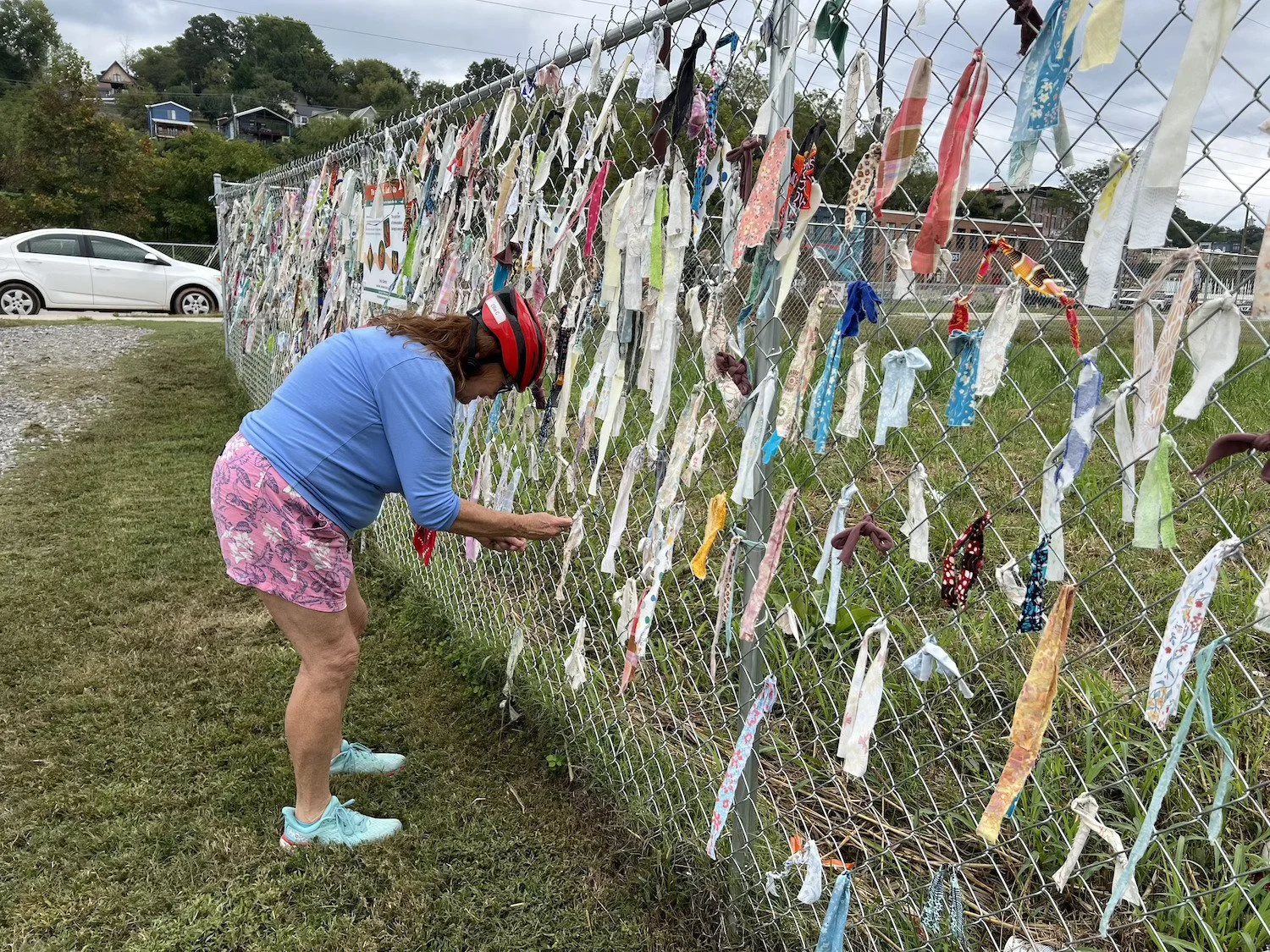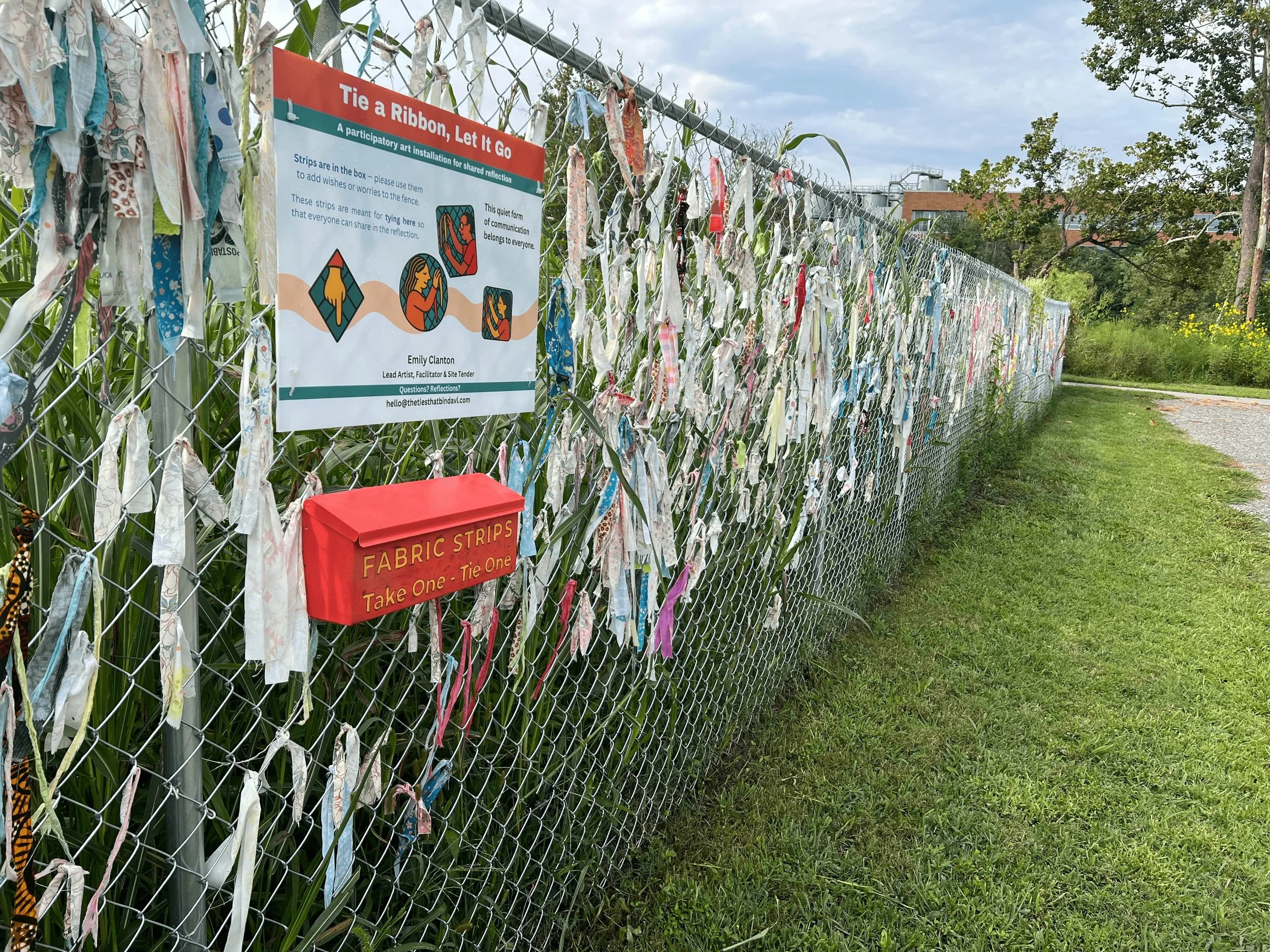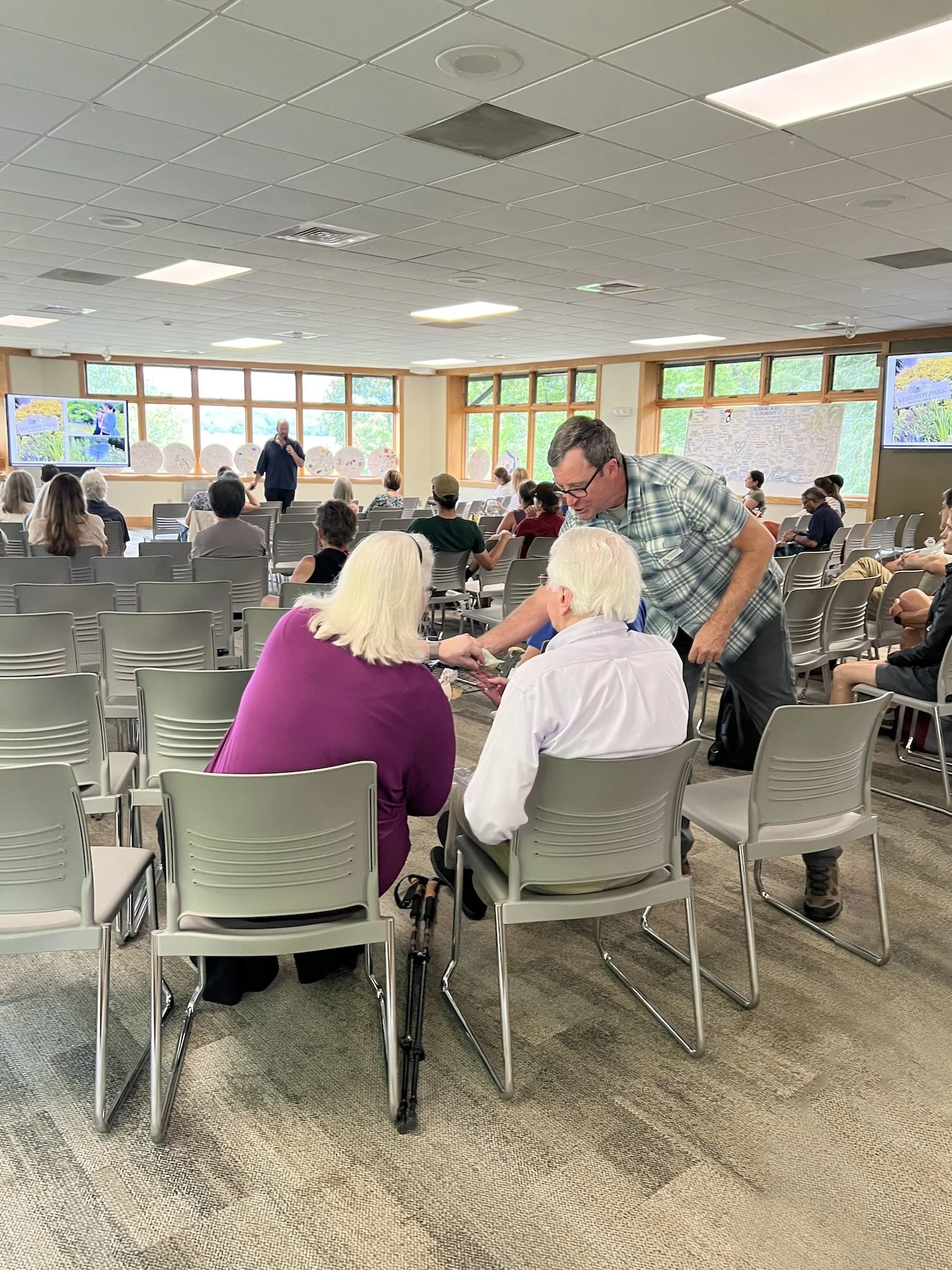
THE TIES THAT BIND ASHEVILLE (2025)
OVERVIEW
The Ties That Bind Asheville was a participatory public-art project developed and facilitated by the artist as a living, civic-care installation of shared reflection.
The project first took shape during a community gathering in May 2025, organized by a local grief and renewal practitioner whose work centers on collective healing through symbolic, creative acts. The event invited reflection and reconnection through nature, movement, and shared making. Held in an area still recovering from Tropical Storm Helene, the gathering carried added meaning.
Within this setting, the artist was selected to design and lead a participatory activity inviting attendees to tie repurposed fabric strips onto a riverside fence—creating a collective visual record of care and offering a way to share their wishes and worries.
After the event, the artist returned to the site independently, continuing the work as an open civic practice inviting participation through process, ritual, aesthetics, and simple curiosity.
Over 163 days (May 29–November 7, 2025), the project grew into a modular, city-wide practice of collective dialogue and care across public spaces.
OBJECTIVES
Cultivate a living artwork that grows across multiple sites—each a node of connection within a shared field—where modular activations invite broad public participation in artmaking.
Demonstrate how a concept first introduced within a symbolic, participatory gathering can extend into an ongoing civic practice rooted in accessibility and inclusion.
Sustain unity across all sites by returning gathered materials to the primary installation.
Strengthen public networks through accessible, inclusive creative participation.

5/18/25 – Day 0: Detail— The first grouping of brightly colored fabric tied to the fence during the May 2025 community gathering. The colors faded quickly in the elements.
6/21/25 – Day 34: Mobile activation at Warren Wilson College’s Summit: Collaboration for Climate Action, where audience members contributed fabric strips during Thrive Asheville’s Lessons for the Recovery launch.
PROCESS
Origin: The project first took shape during a community gathering in May 2025, organized by a local grief and renewal practitioner whose work centers on collective healing through symbolic, creative acts. Within this setting, the artist was selected to facilitate a participatory activity in which attendees tied repurposed fabric strips onto a riverside fence—creating a shared visual record of care.
Expansion: Following the event, the artist returned to the site to maintain and document the installation, developing the gesture into a long-term practice grounded in civic participation and care.
Modular Growth: Additional activations were hosted by partner sites—including Local Cloth, Warren Wilson College’s Environmental Summit (during Thrive Asheville’s recovery-research launch), and Allon Health & Wellness—extending the work’s reach across public settings.
Unification: Fabric strips gathered from these activations were returned to the primary riverside fence, maintaining both connection across all iterations.
OUTCOMES
Established a recognizable, community-centered practice rooted in tactile, repeatable gestures that activated arts, academic, and wellness environments—demonstrating the versatility of participatory public art.
Illustrated how small, shared actions can generate collective meaning and belonging.
Modeled how participatory practices can bridge symbolic and civic contexts in accessible, inclusive ways.

9/13/25 – Day 118: Visitors interacted with a temporary environmental activation at Local Cloth during RAD Resilience, celebrating the River Arts District’s recovery following Tropical Storm Helene in Asheville, NC.

9/29/25 – Day 134: Detail view of the fence installation showing fabric strips, signage, and a hand-painted mailbox that allows passersby to select and contribute repurposed cotton strips.
IMPACT
Emotional Processing: Provided an accessible way for participants to externalize wishes, worries, and honor memory through collective physical gesture.
Social Cohesion: Transformed private emotion into visible, collective expression, strengthening group connection.
Civic Adaptability: Showed how participatory methods translate effectively across different public environments.
Modular Accessibility: Enabled engagement across age, setting, and ability through simple, repeatable acts of making.
Durational Growth: Emerged from a single-day participatory event and continued over 163 days as an evolving installation supported by community participation.
PARTNER SITES
Local Cloth — Off-site temporary activations supporting public participation.
Warren Wilson College Environmental Summit — Activation during community-recovery research launch.
Allon Health & Wellness — Lobby-based display inviting reflective participation from clients.

